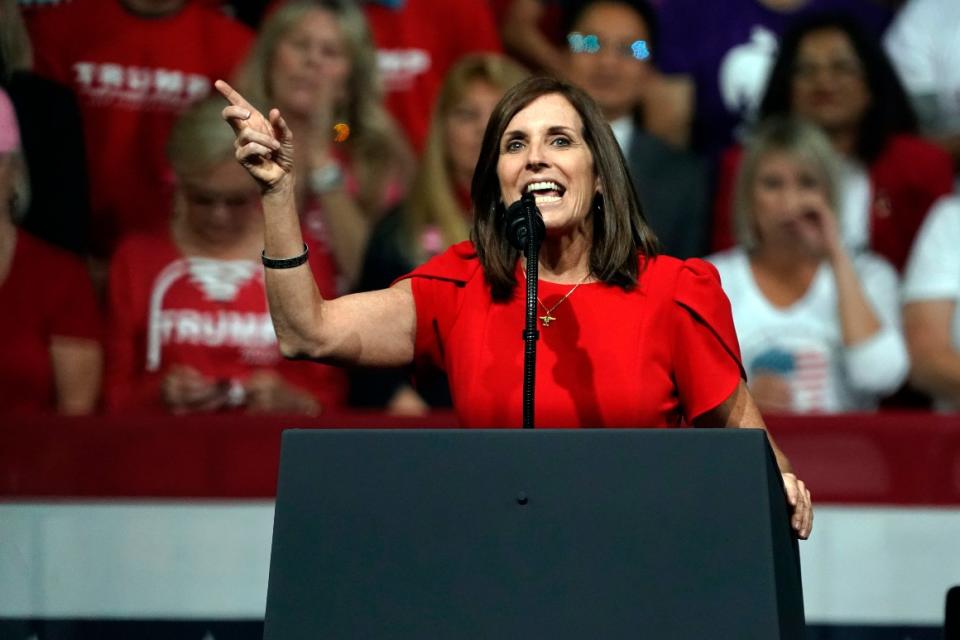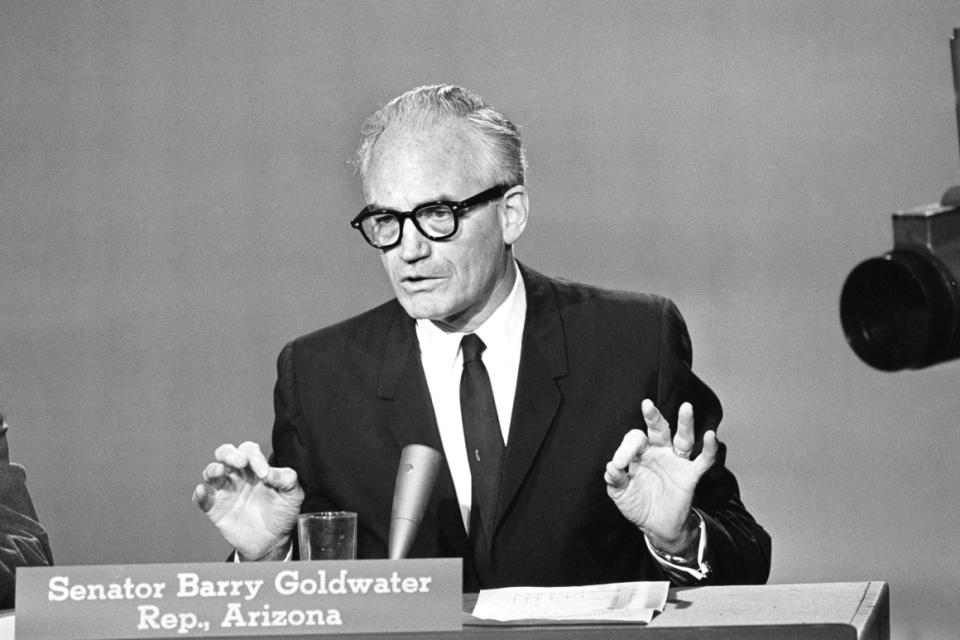Once-dominant Republicans fret Arizona is slipping into blue column
- Oops!Something went wrong.Please try again later.
- Oops!Something went wrong.Please try again later.
Democrats are on track to win big in Arizona next month — from the presidential election to the state House. And Republicans fear it won’t just be a one-time event but the start of long-term Democratic dominance in the state.
It’s a shift that’s been coming since before President Donald Trump’s election but has only been further accelerated over the past four years by his divisive presidency and the Arizona GOP’s evolution from the party of John McCain to that of Trump.
Now, Republicans are reckoning with signs that the party has taken on a direction that won’t play well in Arizona in 2020 — or ever. With that, Democrats could cement control of state politics, as they have in other suburban-heavy states, like Colorado and Virginia. A win by Democratic Senate nominee Mark Kelly would put both of Arizona’s seats in Democratic hands after decades of GOP control. All Democrats need is two seats in the state House and three seats in the state Senate to flip the state legislature. Turning both chambers would be a first for Democrats in more than 50 years.
“It’s Republicans’ own fault this is happening. It’s their unwillingness to govern,” said Chuck Coughlin, a veteran GOP strategist in Arizona. “They’ve always been the party that wants to put together electoral coalitions to address policy issues. And under the party of Trump, you’re just vilifying people, not coming up with ideas.”
“Like Sen. John McCain would say, 'It's always darkest before it's totally black.' And, in this case, black is blue. I hope the party will do some soul-reflecting,” Coughlin added.
Republicans will continue to control number of statewide positions, including the governorship and the state attorney general's office. But a big night for Democrats could see the GOP lose the presidential vote for the first time since 1996, a Senate seat, both chambers of the state legislature and control of the state Corporation Commission.

Arizona’s state races haven’t gotten so much attention given the millions of dollars being pumped into the presidential matchup and expensive race between appointed Republican Sen. Martha McSally and Kelly, which could help tip the Senate over to Democrats. But it’s the possibility of flipping that state legislature that has many Republicans thinking about the long-term effects of Trump’s GOP.
“The Republican Party needs to understand that there’s a large number of us voting Democrat all down the ballot because of Trump, and they need to realize that their choice to blindly follow him will impact the state politics,” said Daniel Barker, a former Arizona Court of Appeals Judge who started Arizona Republicans Who Believe In Treating Others With Respect, a PAC that’s supporting Biden.
“We need to change direction,” he added.
The November election will provide the first indication of whether Arizona is becoming Democratic-leaning territory, like Colorado and Virginia — or a perennial swing state, like Florida. The state’s growing Latino population and shifting attitudes among college-educated white voters across the state have been a boon to Democrats. Almost a third of the state is Latino — and while only about half of them are expected to vote, they are likely to break heavily for Democrats: Sen. Kyrsten Sinema secured 70 percent Latino support in her 2018 run.
“Latino voter turnout has been growing, and then there’s moderate white voters that are breaking toward Biden. And, really, both have been needed to create this Democratic wave,” said Rep. Ruben Gallego (D-Ariz.), who served in the state House for three years and now represents a safe Democratic congressional district in Phoenix.
Voter registration in Arizona is also a bright spot for Democrats. Republicans' advantage has been shrinking for the past three election cycles. Republicans now hold a lead of fewer than 100,000 voters. Compared to 2016, the GOP share of the electorate is flat at 35 percent, while the Democratic share has ticked up 2 points, to 32 percent.

Gallego said he’s optimistic Arizona’s path toward becoming reliably blue will mirror neighboring Colorado. And he argues it’s been a long time coming, dating back to when then-GOP Gov. Jan Brewer signed SB 1070, the controversial “show me your papers” law, in 2010. But the state wasn’t ready to move more toward Democrats then because the Democratic Party had largely ignored Arizona in Obama’s 2008 race against McCain, a beloved figure in the state, Gallego said.
“Trump really sped this up and gave [moderates and independents] a good reason to move away from the Republican Party,” Gallego said.
Arizona's shift left has caught Republicans mostly flat-footed, struggling to adapt to the new political realities. After McSally's loss in 2018, Republican Gov. Doug Ducey appointed McSally to the state's other Senate seat. And Republicans chose a new state party chair: Kelli Ward, the far-right candidate who primaried McCain in 2016 and lost to McSally in the 2018 Senate primary.
“I don’t think anyone would’ve guessed three years ago there’d be a battleground for control of the lower and upper chamber" of the state legislature, said Mike Noble, the chief of research at the polling firm OH Predictive Insights in Phoenix. "It’s mind-blowing."
Noble said it’s unlikely that Arizona will swing from reliably GOP to Democratic in such a short time, but Republicans need to appeal to the middle of the electorate to win there.
“Right now, Arizona is a battleground primarily due to the suburban shift. And remember: Arizona is the home of Barry Goldwater and John McCain — moderate Republicans," he said, a reference to Goldwater's libertarian streak and McCain's "maverick" persona. "It’s really not a red state like Alabama, but an independent state when it comes to the electorate."
Republican groups acknowledge that it’s a tough fight to keep majorities in both the state House and Senate, spending almost double what Democrats have in advertising. Republicans have spent $671,000 to Democrats’ $371,000, according to numbers provided by Advertising Analytics. The Republican State Leadership Committee also has Arizona on its top targets list, despite it not being a redistricting priority.
Meanwhile, Democrats have focused on four target races in the state House and six in the state Senate. Republican and Democratic strategists agree it’s most likely Democrats will win the state House, but Republicans will retain control of the state Senate — though a full flip is certainly possible.
“Republicans are playing defense, and [Democrats] really could be handed the ball here,” Coughlin said.

